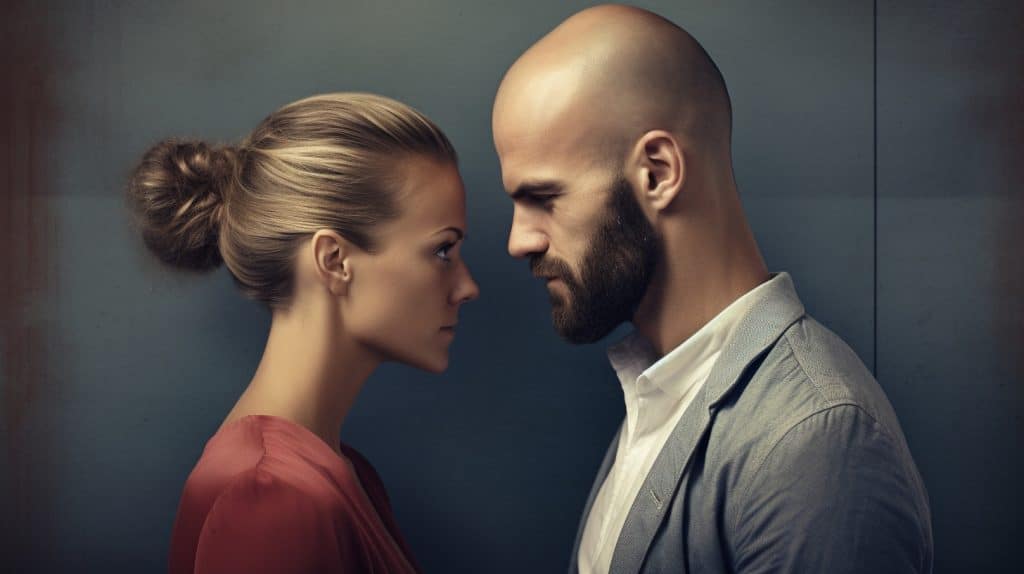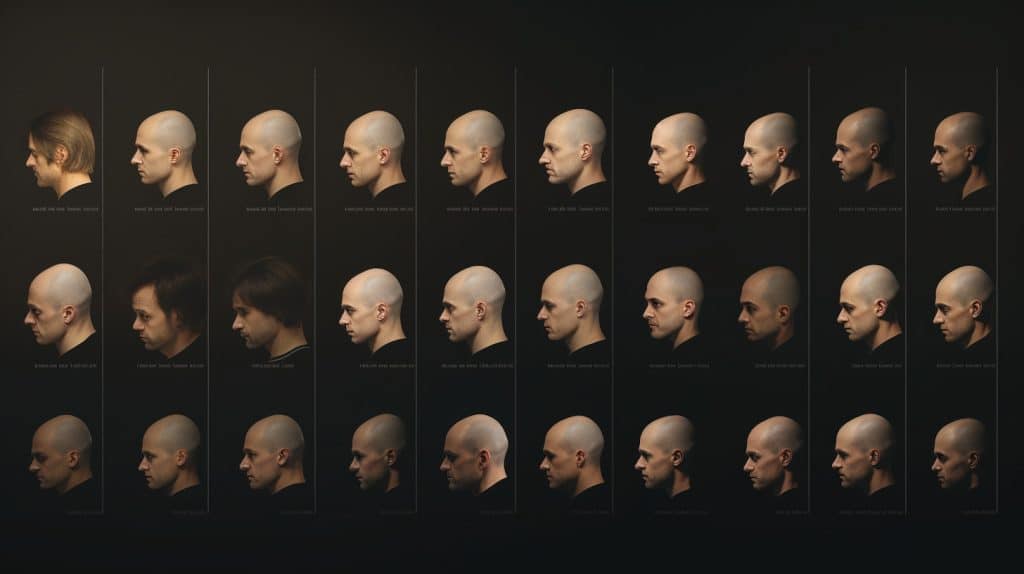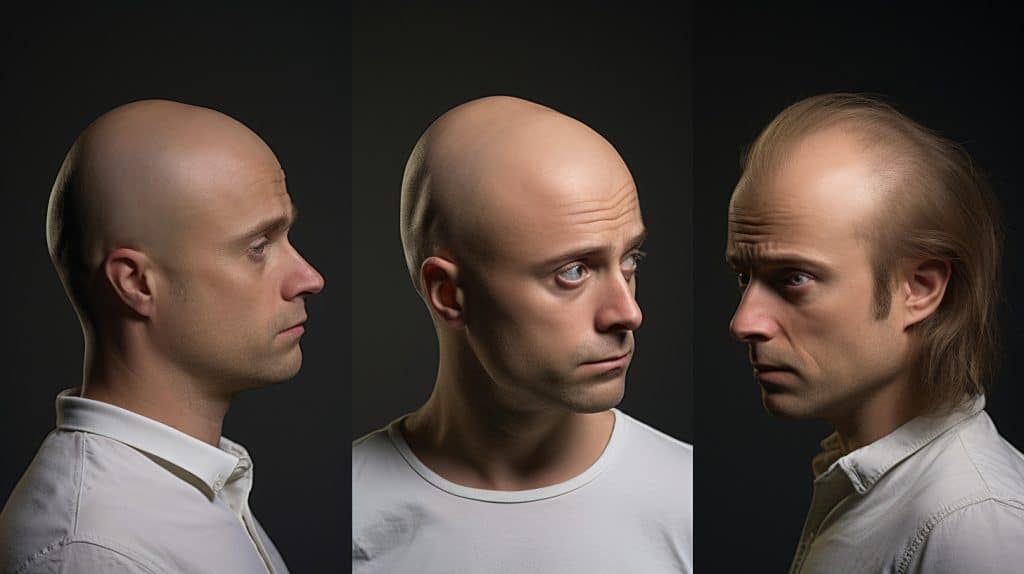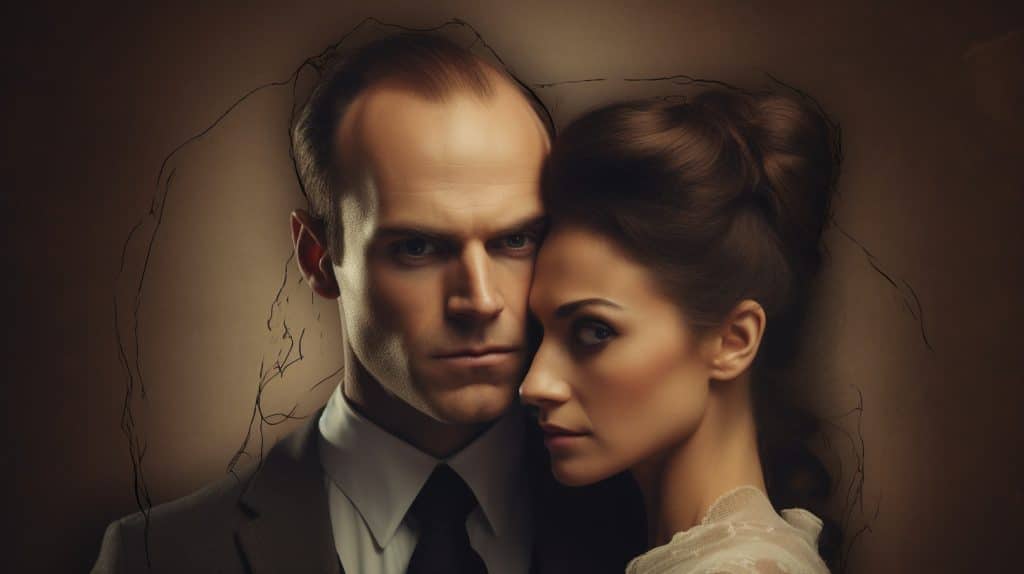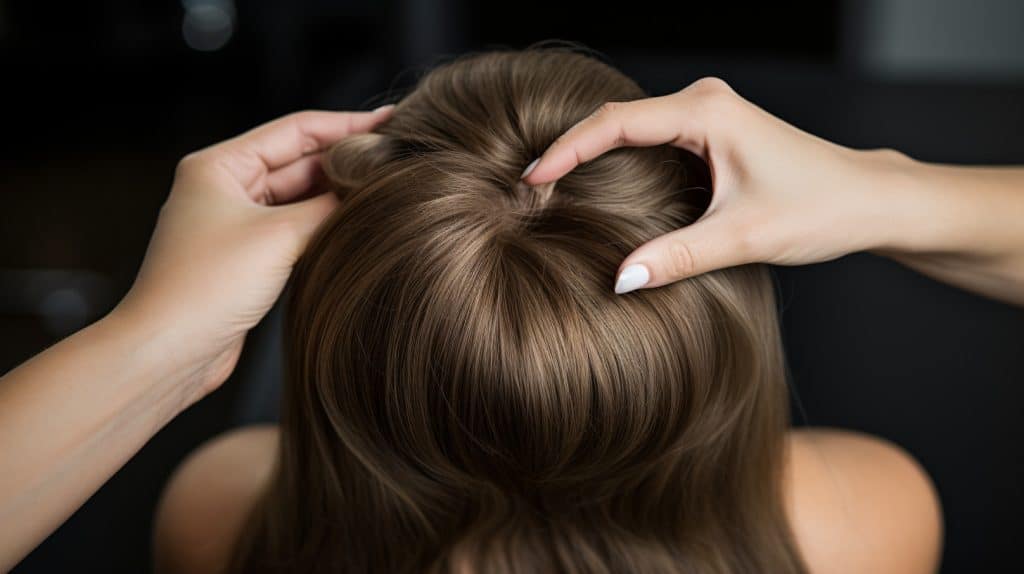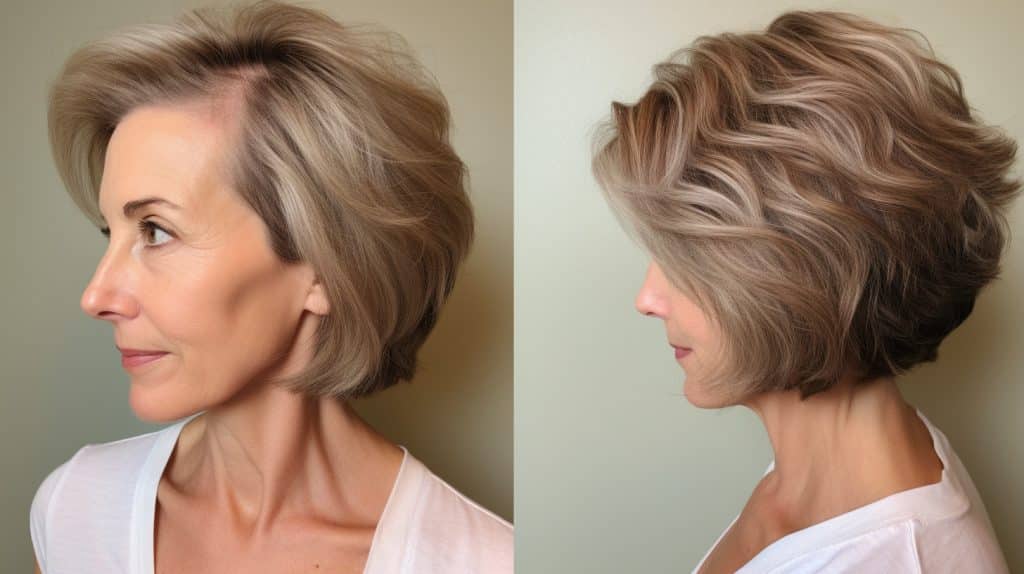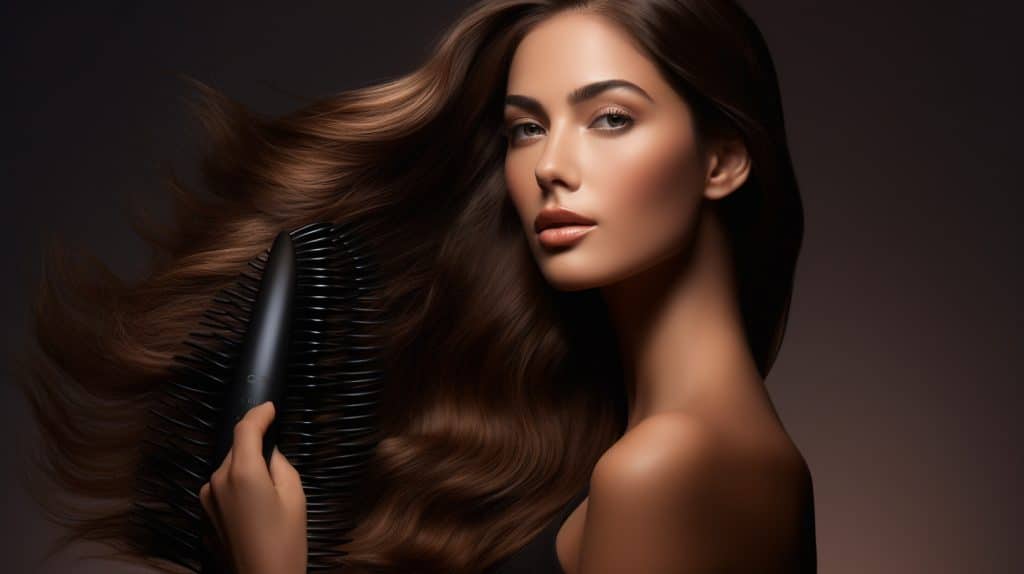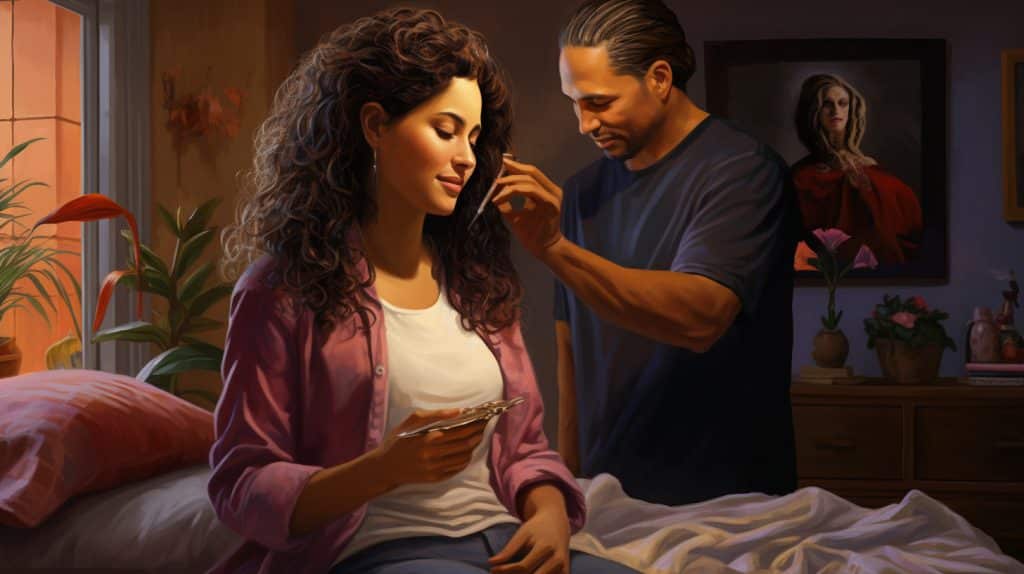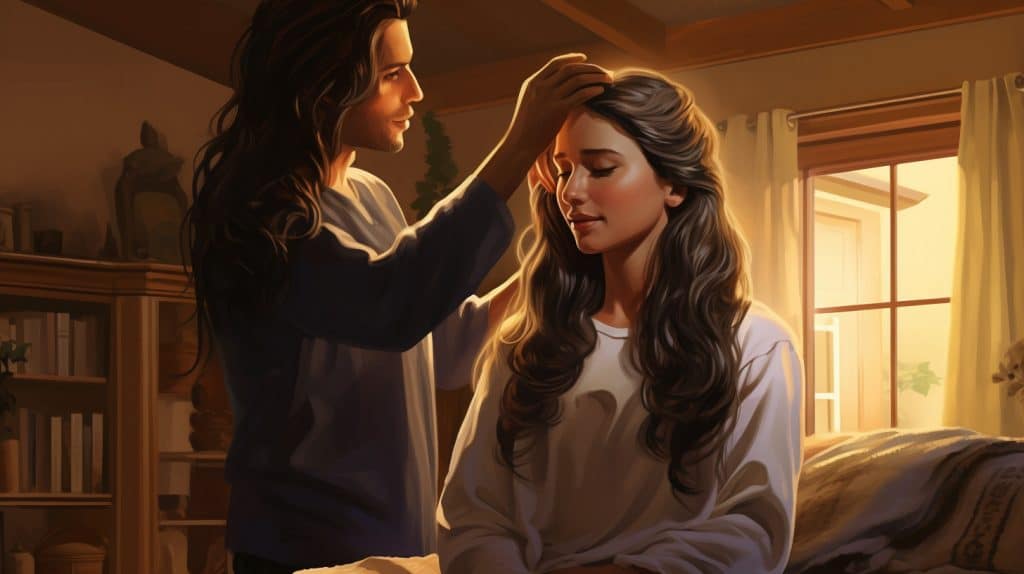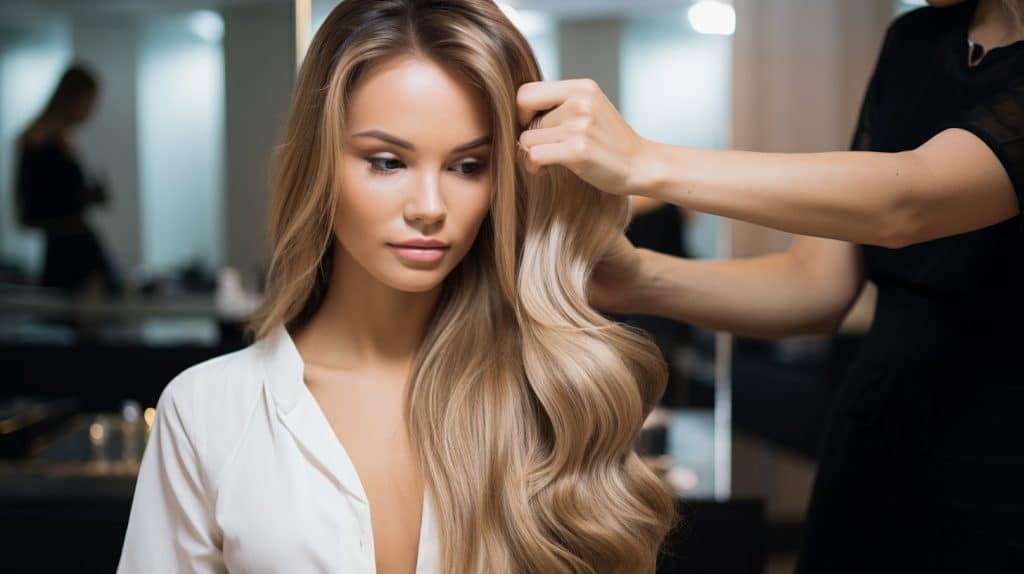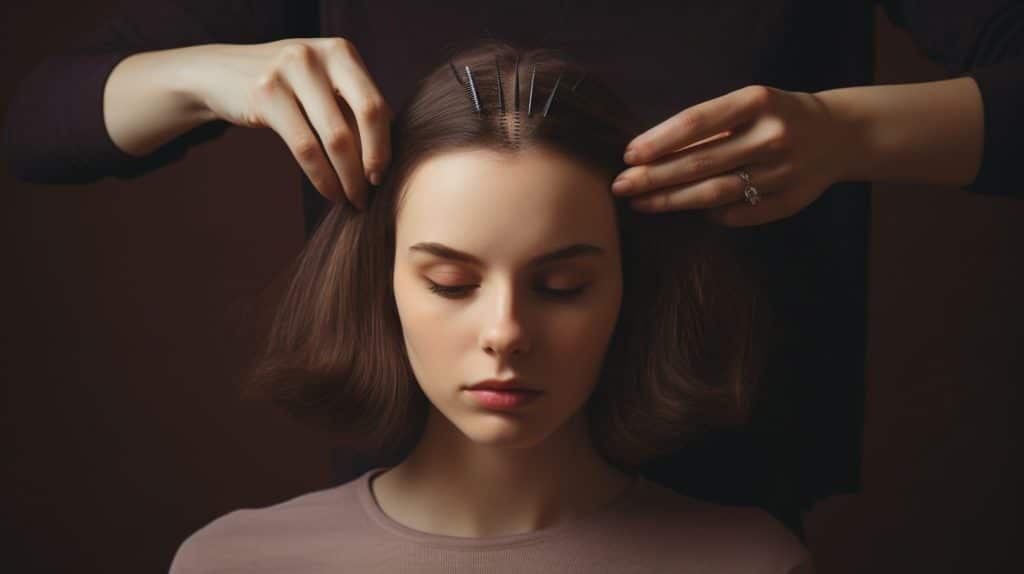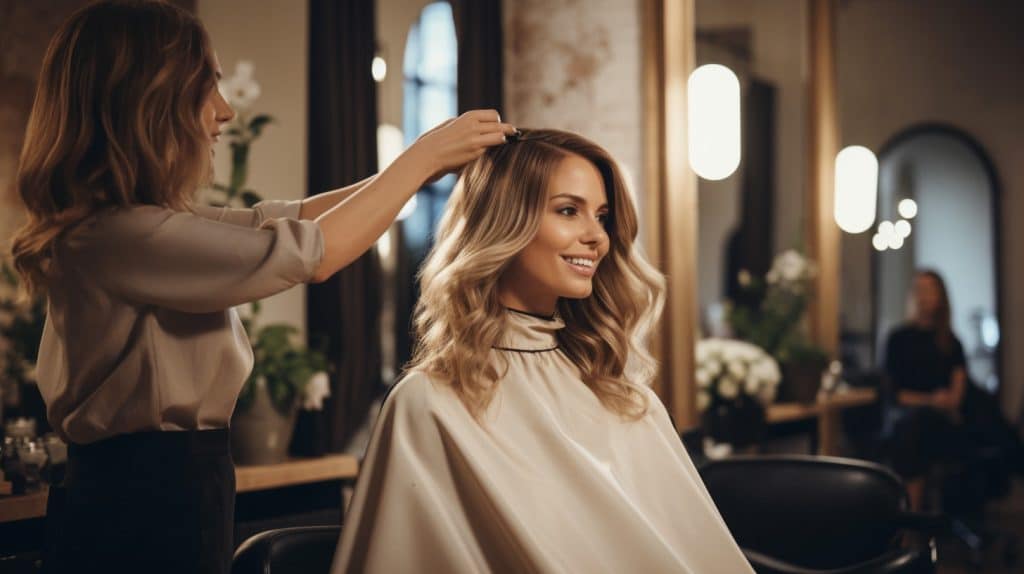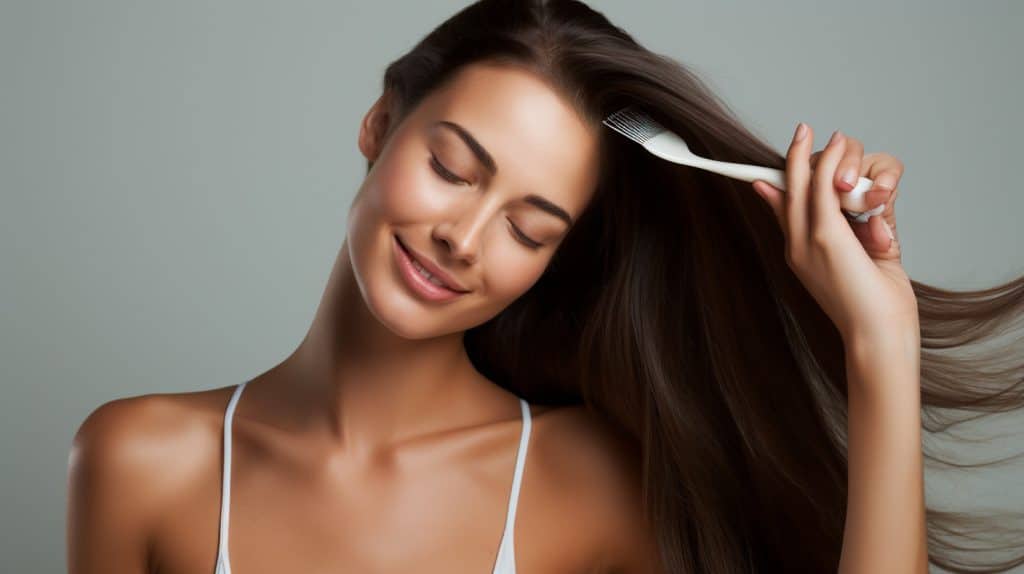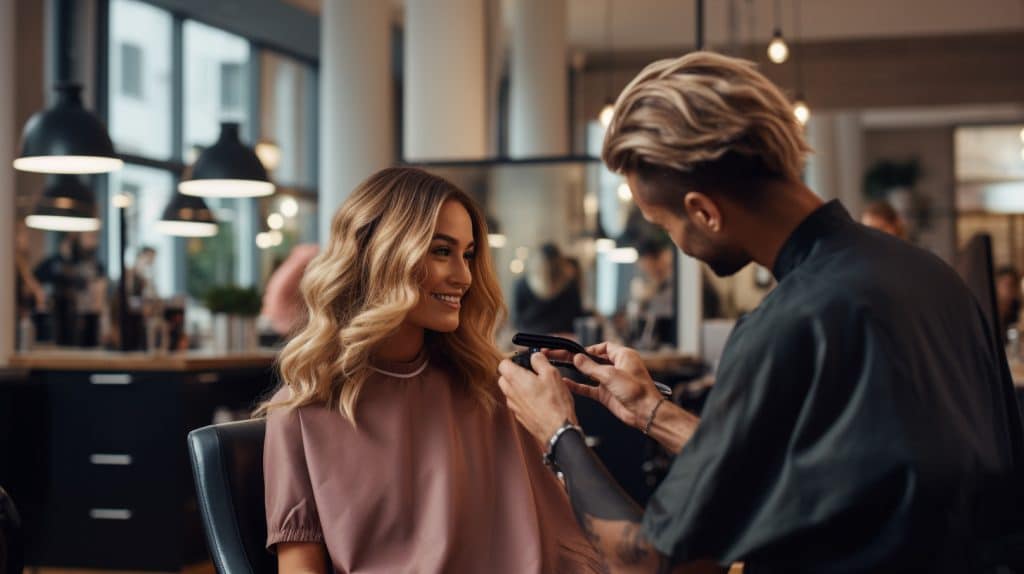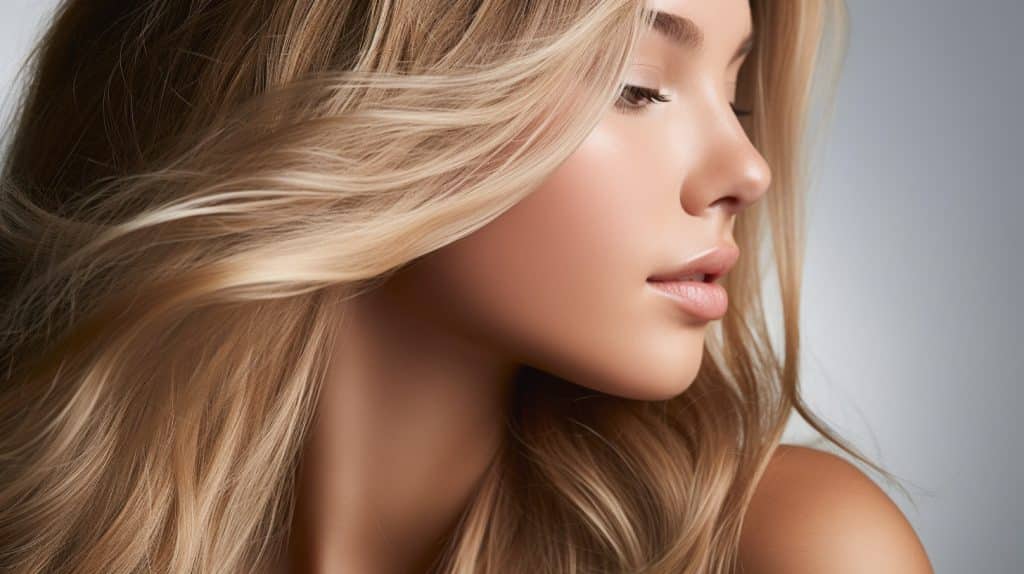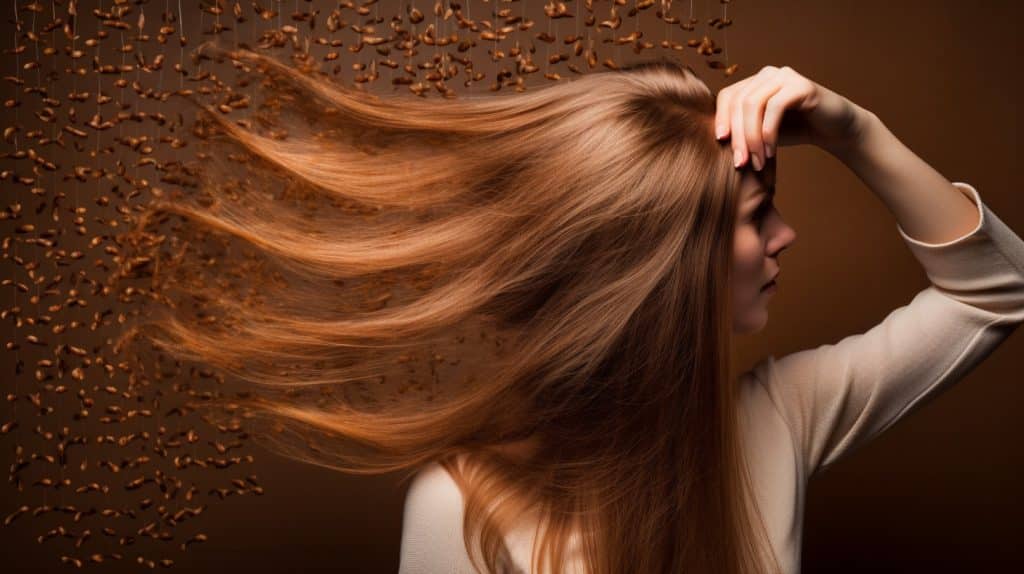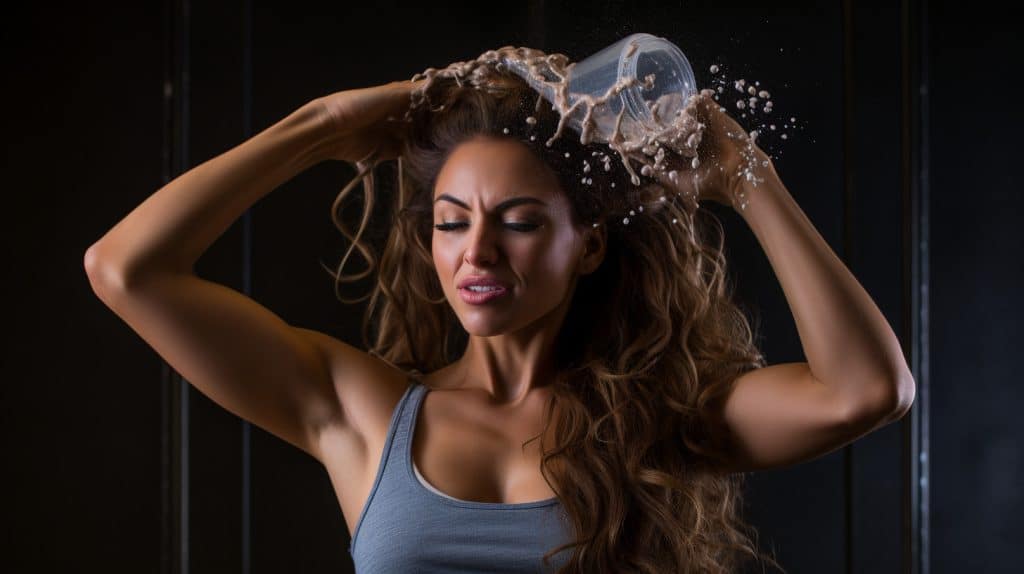Losing your hair can feel like losing a part of yourself, as if you’re watching pieces of your identity slip away. It’s a journey that many of us will face as we age. Male pattern baldness, or MPB, is a common condition that affects countless individuals worldwide. But don’t worry – you’re not alone in this struggle.
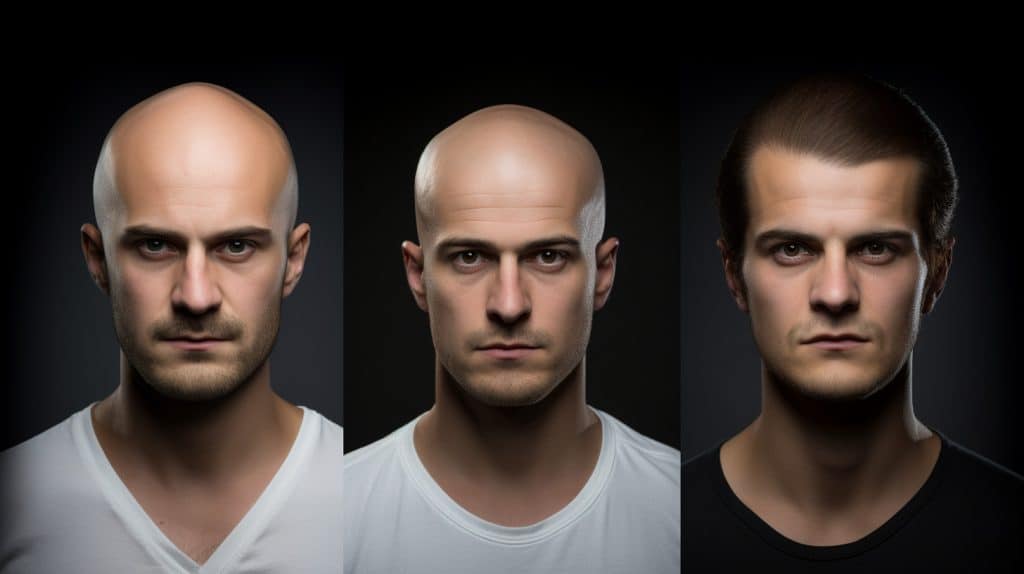
In this article, we’ll explore the different stages of male pattern baldness and shed light on effective treatments for each stage. We’ll also dive into the emotional challenges that come with living with MPB and provide some guidance on how to deal with them.
Think of me as your guide on this path, sharing knowledge and resources to help you navigate through the ups and downs of male pattern baldness. Together, we can find solutions, support one another, and embrace our unique journeys with confidence and resilience.
Key Takeaways
– Male pattern baldness is a common condition that affects assigned males at birth as they age.
– The causes of male pattern baldness are not fully understood, but there are medications and treatments available to stop or reverse it.
– Mental health can be impacted by male pattern baldness, and it is important to seek help for any related concerns.
– Early intervention is important when signs of male pattern baldness appear.
Male pattern baldness affects two-thirds of all people assigned male at birth, and your odds of experiencing some hair loss increase with age.
Understanding Male Pattern Baldness: Definition and Causes
Now, let me take you on a journey to understand male pattern baldness stages – the gradual loss of hair above the ears that affects most men at some point in their lives. It’s like a slow dance where your hair thins around the temples and then gracefully retreats towards the back of your scalp, leaving behind a barren landscape with only a bald spot near the crown.
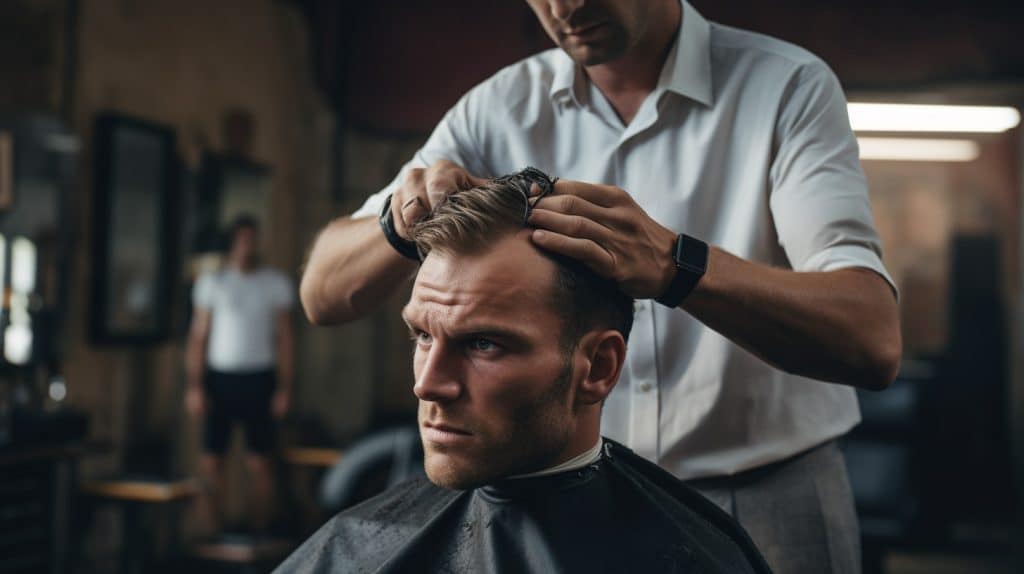
Male pattern baldness stages typically starts in your 30s but can occur as early as your teenage years. The older you get, the more likely you are to experience symptoms. This condition is influenced by genetics, including those passed down from your maternal grandfather.
There are different stages of hair loss associated with male pattern baldness. In the early stages, you may notice thinning around the temples. As it progresses, hair loss extends backward towards the back of your scalp, forming an ‘M’ shape when viewed from above. Eventually, a bald spot near the hair whorl in the back of the crown may appear.
To identify male pattern balding and determine its stage, consulting with a healthcare provider is crucial. They can provide guidance on appropriate treatment options based on your specific case.
Treatment for male pattern hair loss depends on various factors such as age and stage of hair loss. Medications like minoxidil (Rogaine) and finasteride (Propecia) are FDA-approved options that can help reduce further hair loss and potentially regrow some hair.
Understanding the stages of male pattern baldness and seeking appropriate treatment can make a significant difference in managing this condition effectively. Remember to consult with healthcare professionals who specialize in treating male pattern baldness for personalized advice and support throughout each stage of this journey.
The Norwood Scale: Deciphering the Stages of Male Pattern Baldness
Visualize the progression of hair loss on your scalp as you navigate through the stages of the Norwood Scale. From a full and healthy head of hair to a receding hairline and thinning crown, the Norwood Scale is a standardized system developed by Dr OTar Norwood in the 1950s to classify male pattern baldness stages based on the pattern and severity of hair loss.
The Norwood Scale consists of seven stages that describe different levels of hair loss.

The first three stages primarily involve receding hairlines. Stage 2 starts with a slight recession at the temples, while stage 3 progresses to a more pronounced M-shaped pattern.
On the other hand, stages 4 to 7 focus on crown balding. Stage 4 shows significant hair loss at the crown, while stage 5 reveals an even larger bald spot at the top of the head. In stage 6, this bald spot grows larger, leaving only thinner hair on the sides. Finally, stage 7 represents very little remaining hair on the crown.
Understanding your classification on the Norwood Scale is crucial for determining appropriate treatment options. Medications like minoxidil and finasteride can help slow down or stop further hair loss by promoting scalp health and stimulating hair growth. In more advanced cases such as Norwood scale stage 7, where there is minimal remaining hair on the crown, surgical intervention like a hair transplant may be necessary to restore lost follicles.
By identifying where you fall within this scale, you can work with a healthcare provider or specialist to create an individualized treatment plan that suits your needs best. Whether it’s medication or surgical procedures like transplantation, there are options available to address male pattern baldness and promote regrowth for improved confidence and quality of life.
Living with Male Pattern Baldness: Dealing with Emotional Challenges
Coping with the emotional challenges of hair loss can be a difficult journey, but there are strategies and support available to help individuals navigate this experience. Male pattern baldness can progress through various stages, and it is essential to understand these stages in order to manage the emotional impact effectively.
At each stage of male pattern balding, individuals may experience different emotions and concerns. For example, those in the early stages may feel self-conscious or worried about their changing appearance. As the hair loss progresses, individuals may struggle with feelings of insecurity, decreased self-esteem, or even depression. It is important to recognize that these emotions are valid and seeking support is crucial.
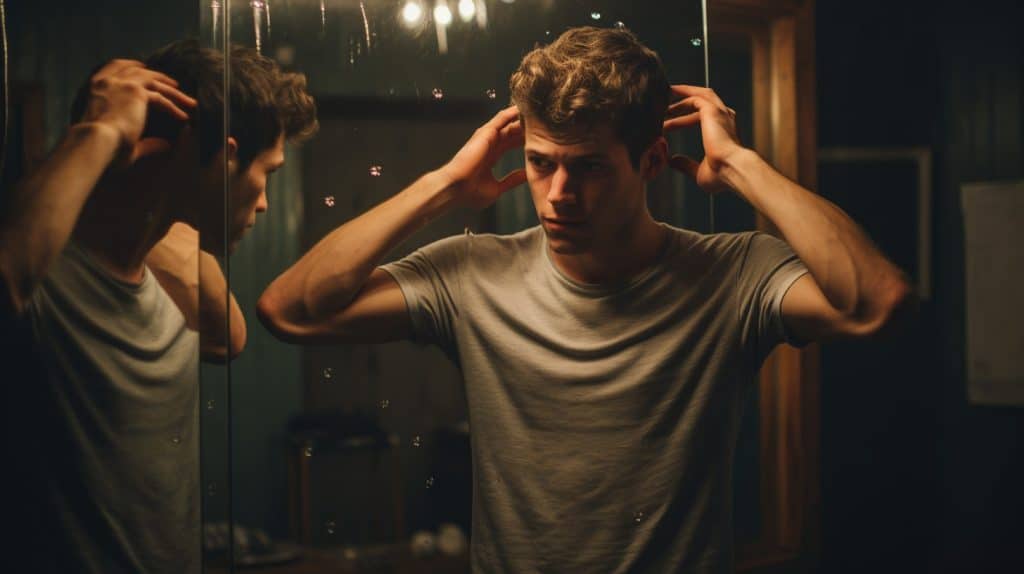
Treatment options for male pattern baldness can help address both the physical and emotional aspects of living with hair loss. From medications like finasteride and minoxidil to hair transplantation surgeries, there are various approaches available depending on individual needs and preferences. Consulting with a healthcare provider can help determine the most suitable treatment plan.
In addition to medical interventions, finding emotional support is vital for those dealing with male pattern baldness. Support groups or counselling services specialized in addressing body image issues can provide a safe space for sharing experiences and receiving guidance from others going through similar challenges.
Ultimately, it’s important to remember that living with male pattern baldness does not define one’s worth or attractiveness. Embracing one’s unique appearance and seeking out resources for emotional well-being can lead to increased confidence and overall satisfaction in life.
Modern Solutions: Effective Treatments for Each Stage of Baldness
Explore the range of innovative treatments available to address hair loss at every phase, providing effective solutions for individuals seeking to regain their confidence and restore their natural hair growth.
| Baldness Stage | Treatment Options |
|---|---|
| Early Stage | Topical medications such as Minoxidil can help stimulate hair growth and slow down further hair loss. Finasteride, an oral medication, is also commonly prescribed to block the hormone responsible for male pattern baldness. In addition, low-level laser therapy (LLLT) devices are available that promote hair regrowth by stimulating follicles. |
| Mid Stage | For individuals experiencing moderate hair loss, a combination of topical medications and oral medications may be recommended. This approach targets both the scalp and the underlying hormonal causes of male pattern baldness. Hair transplant surgery is also a popular option for those looking for more permanent results. The procedure involves transferring healthy hair follicles from one area of the scalp to areas with thinning or no hair. |
| Advanced Stage | In advanced stages of male pattern baldness where there is significant hair loss, surgical options like scalp reduction or tissue expansion may be considered. These procedures involve removing parts of the bald scalp or stretching the existing scalp to cover larger areas. Hair transplantation can also be performed in conjunction with these techniques to achieve optimal results. |
In addition to these treatments, it’s important to note that maintaining overall health and managing stress levels can contribute positively to preventing further hair loss.
With modern advancements in medical technology and research breakthroughs, individuals affected by male pattern baldness now have access to a variety of effective treatments tailored to each stage of their condition. These innovative solutions provide hope for those seeking not only restored confidence but also natural-looking hair growth.
It’s crucial for individuals experiencing any stage of male pattern baldness to consult with a healthcare professional who specializes in treating this condition. They can assess individual needs and recommend the most suitable treatments, taking into consideration factors such as age, overall health, and personal preferences. Remember, there are effective solutions available to help address hair loss and restore a sense of confidence and well-being.
Early Detection and Prevention: Combatting Male Pattern Baldness
Imagine catching a glimpse of your reflection and noticing a small patch of grass that has started to wither in your otherwise lush green lawn. This serves as a reminder that early detection and prevention are key to combating the gradual loss of hair. Recognizing the stages of male pattern baldness is crucial in order to take proactive measures to prevent further hair loss.
You may have heard about male pattern baldness genetics. Yes, male pattern baldness is usually influenced by the genes you’re born with. There may be a history of it in your family. Interestingly, the genes passed down on your mother’s side of the family can also affect your risk. So, if you want to get an idea about what you may look like as you get older, observe your maternal grandfather’s hair.
In both men and women, the first signs of male pattern baldness often include thinning hair at the temples or a receding hairline. By identifying these initial signs, individuals can seek prompt treatment to slow down or halt the progression of hair loss.
There are various treatments available for male pattern baldness, including medications such as minoxidil and finasteride. These medications can help stimulate hair growth and prevent further loss. Additionally, advanced procedures like hair transplant surgery or laser therapy may be recommended by healthcare providers.
Preventing male pattern baldness also involves adopting healthy lifestyle habits. This includes avoiding excessive heat styling or harsh chemical treatments on the hair, maintaining a balanced diet rich in vitamins and minerals essential for hair health, managing stress levels effectively, and protecting the scalp from sun damage.
Being aware of the early stages of male pattern baldness is vital for taking timely action towards prevention and treatment. By consulting with healthcare providers specialized in dermatology or plastic surgery, individuals can receive tailored advice on suitable interventions based on their specific needs. Remember that addressing signs of hair loss promptly can maximize chances of successful intervention and potentially reverse or slow down its progression.
FAQs
How quickly does male pattern baldness progress?
The speed at which male pattern baldness progresses can vary greatly among individuals. Factors such as genetics, health, and age can influence the rate of hair loss. On average, it can take 15-25 years to go through all the male pattern baldness stages. However, some men may reach the final stages within five years. Early detection and understanding the specific stage of male pattern baldness can help manage its progression.
What is stage 4 male baldness?
Stage 4 of the male pattern baldness stages is defined by the Norwood Scale, a widely recognized classification system for hair loss. At this stage, hair loss is more significant, with further recession at the temples and evident balding on the top of the scalp. The hairline and the bald spot at the top might still be separate, but they’re noticeably closer together. Understanding this stage can be essential in determining the right treatment strategy.
What are the stages of male baldness?
The stages of male pattern baldness are often described using the Norwood Scale, which includes seven stages. Stage 1 represents no significant hair loss or receding hairline. By Stage 3, there’s a sharp recession at both temples, forming an “M” shape.
Stage 4 is described above, and the condition progresses until Stage 7, where only a band of hair remains around the back and sides of the scalp. Recognizing the male pattern baldness stages can help in adopting appropriate measures to manage the condition.
Can male pattern baldness be reversed?
While there’s no surefire cure for male pattern baldness, certain treatments may help slow down, halt, or partially reverse the male pattern baldness stages. These include topical treatments like minoxidil, oral medications like finasteride, and surgical options such as hair transplants.
However, their effectiveness can greatly vary between individuals. It’s also important to note that early intervention tends to yield the best results, highlighting the importance of understanding and identifying the stages of male pattern baldness.
from Life & Healthy Living https://lifeandhealthyliving.com/male-pattern-baldness-stages-dare-to-hope/
via IFTTT
from Life and Healthy Living https://lifeandhealthyliving0.blogspot.com/2023/07/male-pattern-baldness-stages-dare-to.html
via IFTTT
from
https://lifeandhealthyliving0.wordpress.com/2023/07/30/male-pattern-baldness-stages-dare-to-hope/
